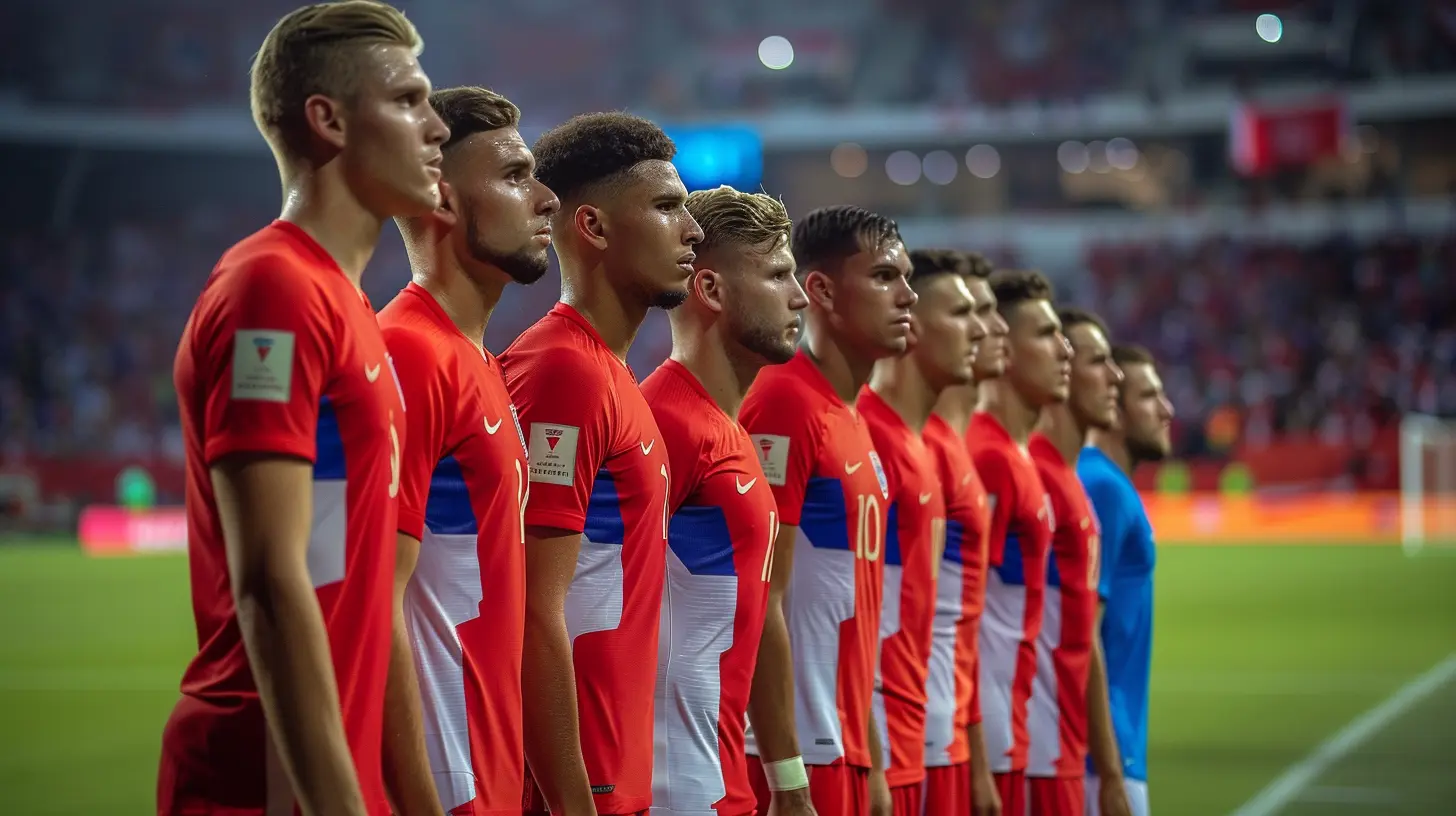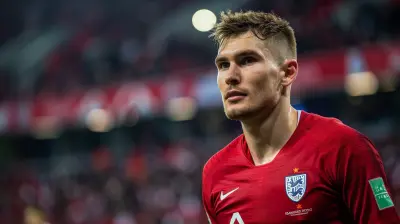16 March 2025
When it comes to sports, the national teams we cheer for often become a reflection of our collective identity. Whether it's football, basketball, cricket, or any other sport, these teams are the pride of nations. But have you ever wondered how these teams manage to stay competitive, especially when key players age or retire? It's not magic — it’s a well-planned transition between generations.
National teams, just like businesses, need a solid succession plan. Think of it like passing down the family business; you need to ensure the next generation is as skilled and prepared as the last. But how exactly do national teams handle this delicate balancing act? Let’s dive into it.

The Importance of Generational Transition in National Teams
First things first, why is transitioning between generations so crucial?In the world of sports, athletes can't escape the inevitable—age. No matter how legendary a player is, sooner or later, they'll slow down, lose some of their agility, or even retire. For national teams, this can be a nightmare if they’re not prepared. Imagine losing your top goal scorer or your rock-solid defender overnight with no one to fill their shoes. Scary, right?
The smooth transition between generations ensures that national teams remain competitive on the global stage. It keeps the team’s heartbeat going, preventing any sudden dips in performance or extended periods of rebuilding. When done right, it feels like a well-oiled machine, with one group of players seamlessly passing the torch to the next.
But, as you can imagine, it’s easier said than done.

Challenges National Teams Face During Generational Shifts
Before we talk about how transitions happen, let’s look at the obstacles that national teams face during this phase. Believe me, it’s not a walk in the park.1. Timing the Transition Correctly
Timing is everything. If you do it too early, you risk replacing veterans who are still performing at a high level. Too late, and you could find yourself in a situation where the team is suddenly over-reliant on aging players who can't keep up with the pace of international competitions.Finding the sweet spot is tough. Coaches and managers need to strategically phase out experienced players while gradually integrating younger talent. The trick is to make these changes while still maintaining team chemistry and competitiveness.
2. Balancing Experience with Youth
It’s a delicate balance. You need the experience of veterans to guide the younger players, but at the same time, youth brings energy, speed, and innovation to the game. If you lean too heavily into youth, you might lose the tactical know-how that only seasoned players bring. On the flip side, if you cling too tightly to your veterans, you risk becoming outdated.The ideal scenario is having a mix of both. The veterans offer leadership and wisdom, while the youngsters provide fresh legs and new perspectives. But achieving this balance is like walking a tightrope—it requires constant adjustment.
3. Pressure from Fans and Media
Fans, bless their hearts, aren’t always the most patient people. They want results, and they want them now. National teams are often under immense pressure from the media and fans, especially when beloved veterans are phased out.You might hear, "Why isn’t he starting anymore?" or "This new kid isn’t ready for the big stage!" The transition process can be met with criticism and doubt, making it even more challenging for coaches to make decisions objectively.
4. Identifying the Right Talent
Not every young player is cut out to fill the shoes of a legend. Identifying talent is a tricky business, especially at the international level where the stakes are so high. National teams need scouts and coaching staff who can spot potential early and nurture it.Sometimes, promising young players may look great at the club level but struggle to adapt to the international stage. Others might not mature as quickly as expected. National teams must find a way to carefully evaluate talent and give youngsters the right amount of exposure without overwhelming them.

How National Teams Successfully Handle Generational Changes
Now that we’ve covered the challenges, how do national teams actually handle these transitions successfully? Let’s break it down.1. Gradual Integration of Young Talent
One of the most effective strategies is to introduce young players slowly. National teams often start by giving younger players minutes in less critical matches, friendlies, or smaller tournaments. This allows them to gain experience without the burden of high-pressure situations.Take, for instance, the world of football. During qualifying rounds or in matches against weaker opposition, coaches might rotate the squad, giving younger players a chance to prove themselves. Over time, if they perform well, they’ll be trusted with more responsibility.
This gradual integration helps young players get comfortable with the demands of international play and learn from veteran teammates before stepping into bigger roles.
2. Mentorship from Veteran Players
Another key aspect of transitioning generations is mentorship. Veterans play a crucial role in guiding younger players, not just on the field but off it as well. They teach them how to handle pressure, the importance of team dynamics, and how to navigate the media.Veteran players often become the bridge between the old and new generations. Their leadership ensures that team culture, values, and traditions are passed down, creating a sense of continuity.
Take a look at basketball, for example. In teams like the USA Men's National Team, you’ll often see seasoned players like LeBron James or Kevin Durant mentoring younger guys. They help set the tone, both in terms of work ethic and the mental aspects of the game.
3. Youth Development Programs
The foundation of any successful generational transition lies in the pipeline of talent. National teams that have strong youth academies or development programs are better positioned to handle the retirement of star players.Look at countries like Germany and Spain in football. These nations have invested heavily in youth programs that develop players from a young age. By the time these players make their way onto the national team, they’ve already been trained in a style of play that matches the senior team. This kind of continuity makes it easier for them to slot into the squad when the time comes.
The success of these programs ensures that the national team has a constant stream of talented players who are ready to take over when veterans retire.
4. Tactical Adjustments
Sometimes, with the arrival of a new generation, a national team may need to tweak its tactics to suit the strengths of the younger players. If the old generation excelled in a possession-based style but the new players are more suited to fast counter-attacks, then the coach may need to adjust the team’s approach.This tactical flexibility is key to ensuring that the team remains competitive even as the personnel changes. National teams that are too rigid in their approach often struggle during transitions because they fail to adapt to the evolving skill sets of the players.
5. Building Team Chemistry Early
One of the advantages of integrating young players early is that it allows them to build chemistry with their teammates. The quicker a group of players can gel, the better their chances of success.National teams often organize camps, friendly matches, and smaller tournaments to foster this chemistry. These opportunities allow the younger players to develop relationships on and off the field, which is crucial for a successful transition.
6. Trusting the Process
Ultimately, successful transitions require patience. National teams must trust the process and give younger players the time they need to mature. There will be bumps along the road, but by sticking to a long-term vision, teams can build something sustainable.It’s a bit like gardening. You plant the seeds, water them, and give them sunlight. You don’t expect a full-grown tree the next day, right? In the same way, national teams need to nurture young talent and allow it to grow at its own pace.

Case Studies: National Teams That Nailed the Transition
1. Germany (Football)
Germany is a classic example of a national team that handled the transition between generations masterfully. After a disappointing performance in Euro 2000, the German Football Association revamped its youth development system. Over the next decade, they produced a wave of young talent, including players like Mesut Özil, Thomas Müller, and Manuel Neuer.By the time the 2014 World Cup rolled around, this new generation was ready to take the reins, and they did so by winning the tournament. It was a perfect blend of youth and experience, with veterans like Miroslav Klose passing the torch to the younger players.
2. Spain (Football)
Spain’s golden generation, featuring stars like Xavi, Andres Iniesta, and Iker Casillas, dominated world football from 2008 to 2012. But as these legends began to age, Spain’s national team faced the challenge of integrating new talent.Through a robust youth development system and tactical adjustments, Spain has successfully introduced players like Pedri, Ferran Torres, and Ansu Fati, ensuring that the team remains competitive on the global stage.
Conclusion
The transition between generations is a natural and inevitable part of any national team’s journey. While it comes with its fair share of challenges—timing, balancing experience with youth, and handling external pressures—when done right, it sets the stage for continued success.At the end of the day, national teams that invest in youth development, foster mentorship, and embrace tactical flexibility are best equipped to handle these transitions. It’s not just about replacing players; it’s about ensuring that the team’s identity, culture, and competitive spirit live on through the next generation.
So next time you see a young player representing your national team, remember—they might just be the future.







Valerie McWain
Fascinating topic! It’s intriguing to see how national teams balance continuity and change as they transition between generations. What strategies do they employ to nurture emerging talent while maintaining team cohesion? I’d love to hear more about specific examples and success stories!
April 8, 2025 at 3:53 AM